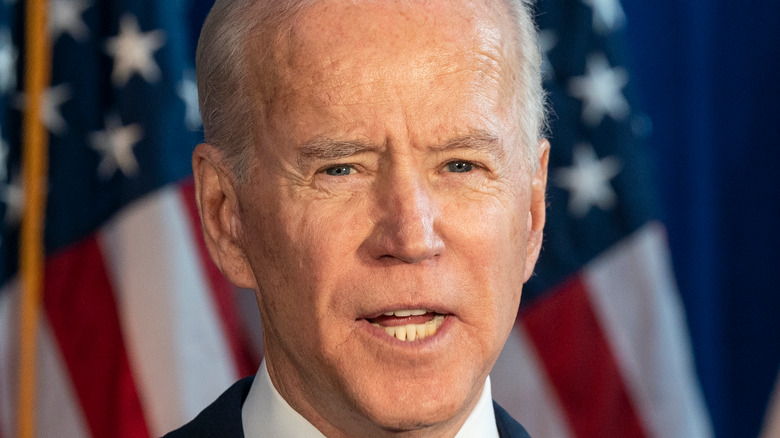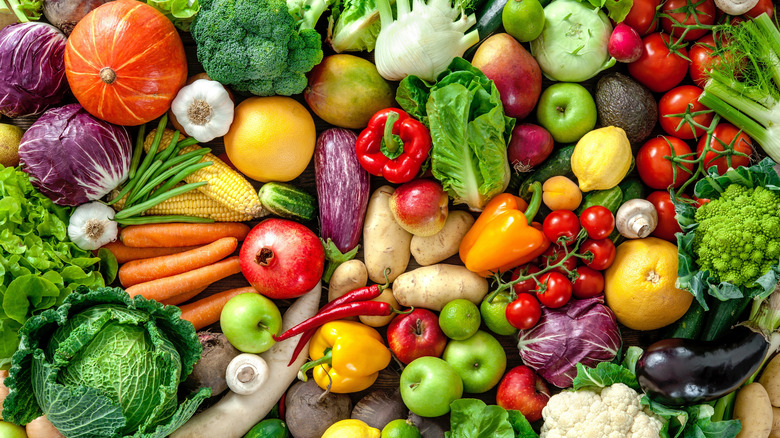The White House Shared Its Plan To Eradicate Hunger By 2030
Health advice for a slew of medical conditions increasingly incorporates the tried-and-true admonitions of "diet and exercise." It looks like the American government is finally weighing in with some practical, concrete plans for turning that rhetoric into reality. Revealed a day ahead of the 2022 "White House Conference on Hunger, Nutrition, and Health" on September 28, the strategy lays out forward-thinking steps to eradicate hunger in the United States by 2030 while also enhancing overall health through preventive, nutrition-based measures, reports The Hill.
Long touted by the World Health Organization (WHO) as crucial to health and long-term development, nutrition affects quality of life from pregnancy and infancy all the way to old age. Proper approaches to healthy eating can impact the immune system, reduce risks for multiple diseases, and help mitigate or improve the impact of medical conditions. Painting solutions with a broad brush is the easy part, but the ambitious White House program pencils in potential details.
What makes this program any different from past initiatives? Implementation, funding, and availability of nutrition-focused healthcare — if legislators and society as a whole step up to embrace the process.
Food as medicine
The hunger eradication plan unveiled by the Biden administration contains multiple prongs. Falling under the umbrella of nutrition-based healthcare and reduction of diet-related diseases, several major components define the intent and implementation over the next eight years. Many, but not all, incorporate or expand social benefits to make them accessible in easy and practical ways, according to USA Today, which highlights a program described as "medically tailored meals."
An existing program from Community Servings in Boston models how consistent, daily meals catered to specific medical needs can help prevent disease progression and save on long-term healthcare costs. Medically tailored meals can benefit the elderly and those with critical illnesses, individuals whose circumstances may hinder access to and preparation of healthy, healing foods. The government plan aims to cover these types of meals through already existing Medicare Advantage plans.
Another strategic element of the program is to expand free, healthy meals at schools, increasing access to 9 million additional children in the next 10 years, notes The Hill. The summer gap gets alleviated by grocery benefits to families when school is not in session. As the WHO points out, healthy children learn better, which in turn can help break generational poverty and hunger cycles.
An investment in healthy lifestyles
Noting that the last major conference addressing food insecurity and disparities took place decades ago under the Nixon administration, USA Today reveals that the food stamp program born from that conference will potentially get some enhancements under the revealed 2022 plan. Now reinvented as the Supplemental Nutrition Assistance Program (SNAP), the proposed tweaks could expand eligibility to those such as ex-prisoners who need a thus-far prohibited fresh start in life. Other program proposals to benefit all segments of the population include investments in the National Park Service, which encourage healthy lifestyles through exercise and fresh air.
Equity, access, and marginalized communities appear in the new policy plans, reports NPR, including nutritional assistance to Native American and immigrant populations. Also playing a pivotal part in discussions and proposed procedures are food insecurity and inequities exposed during the COVID-19 pandemic, notes NPR. Food banks were inundated with people lacking basic food access during shutdowns, while revelations of diet-related diseases, including obesity or undernourishment, led to severe outcomes for those contracting the disease.
Results and bipartisan cooperation are far from a given, but NPR notes that success ultimately depends on a combination of quickly implemented executive action, legislation wins, and buy-in from corporations and nonprofits.


